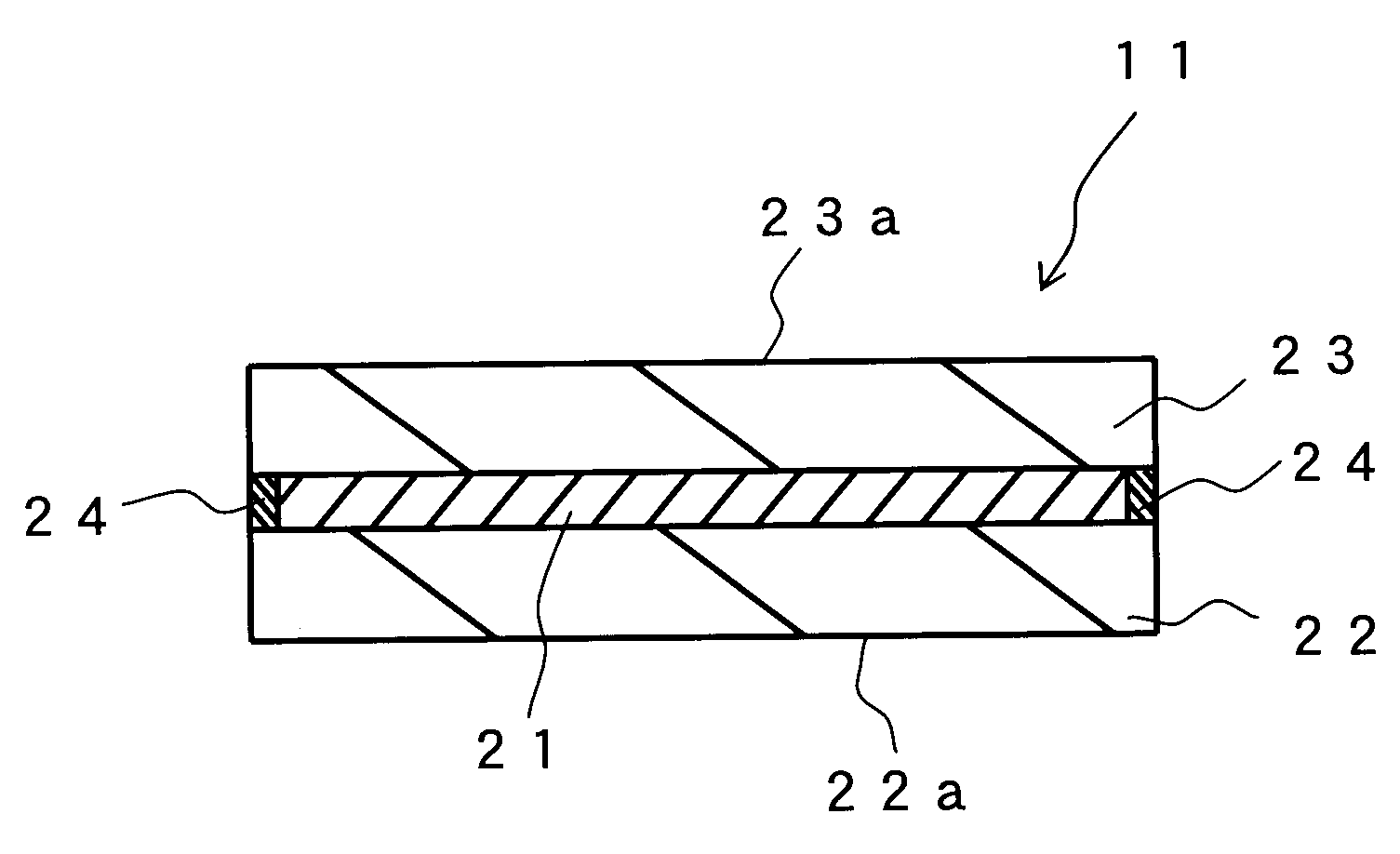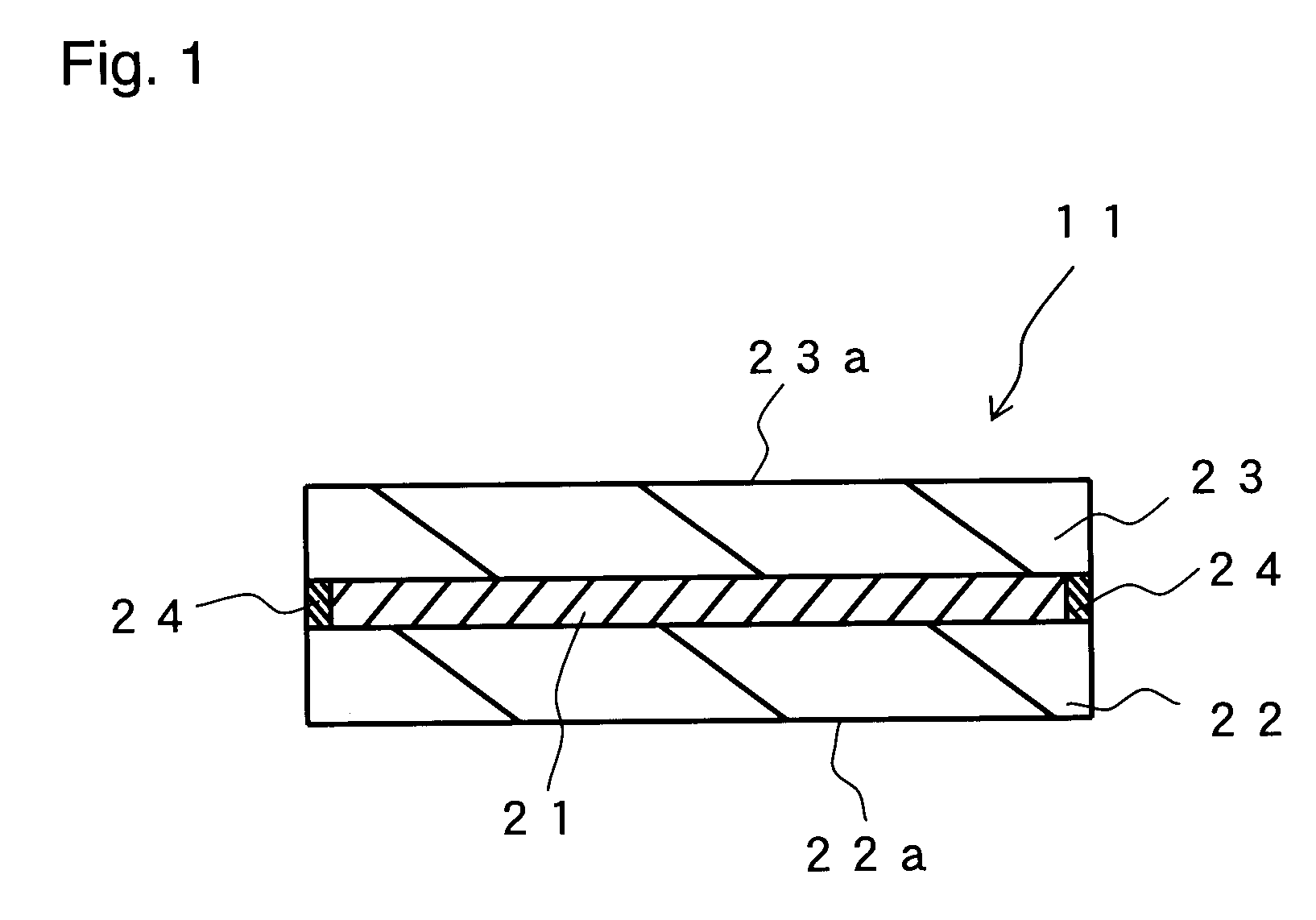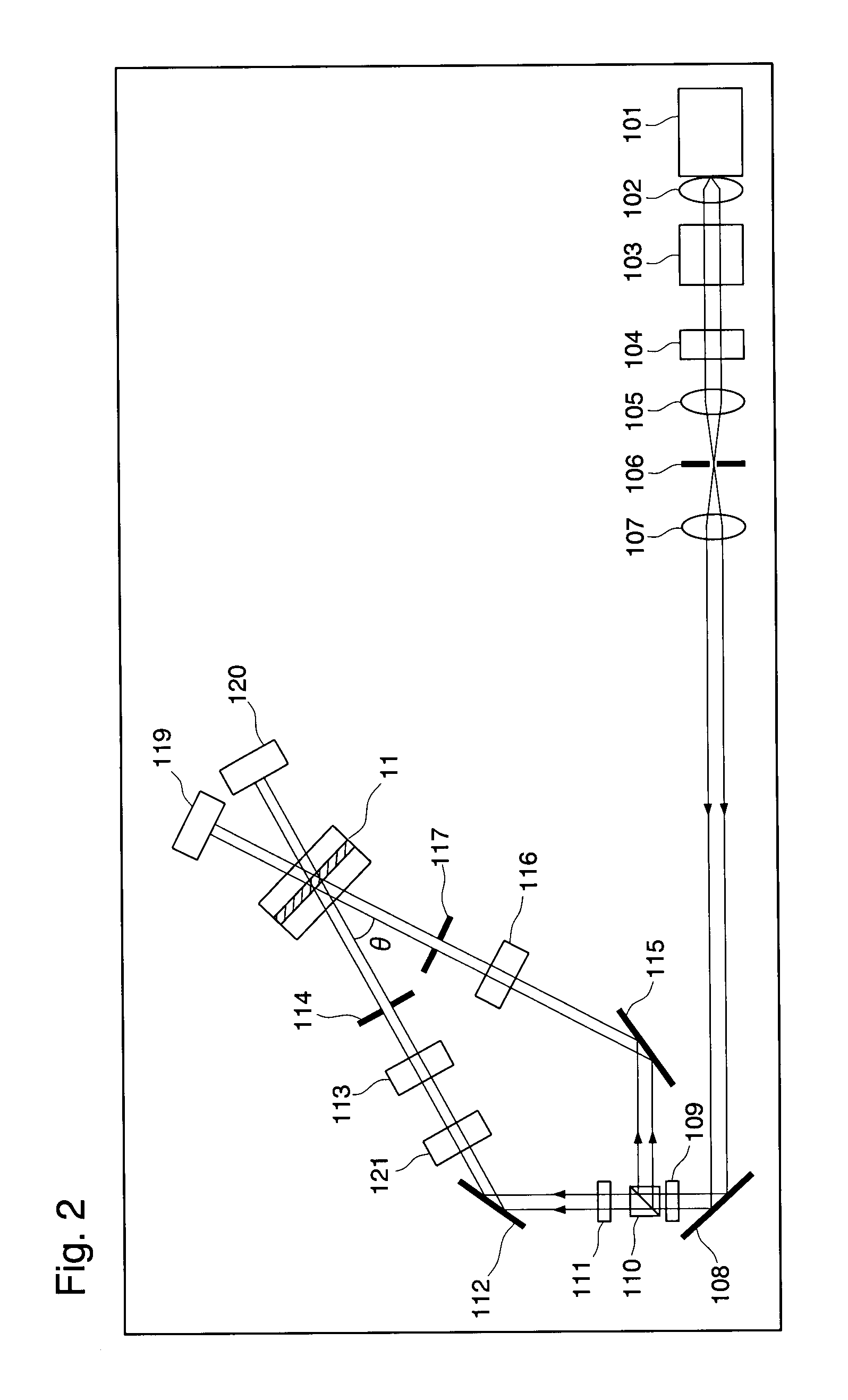Hologram recording medium
a recording medium and hologram technology, applied in the field of hologram recording mediums, can solve the problems of deteriorating separation between adjacent diffraction peaks
- Summary
- Abstract
- Description
- Claims
- Application Information
AI Technical Summary
Benefits of technology
Problems solved by technology
Method used
Image
Examples
example 1
[0091]Diphenyldimethoxysilane and a titanium butoxide oligomer represented by the following structural formula were used to produce a hologram recording material by a sol-gel method in accordance with steps described below:
(Synthesis of a Matrix Material)
[0092]In 40 mL of a solvent of 1-methoxy-2-propanol, 7.8 g of diphenyldimethoxysilane and 7.2 g of the titanium butoxide oligomer (B-10, manufactured by Nippon Soda Co., Ltd.) were mixed to prepare a metal alkoxide solution. Namely, the ratio by mole of Si / Ti was 1 / 1.
[0093]A solution made of 2.1 mL of water, 0.3 mL of a 1 N aqueous solution of hydrochloric acid, and 5 mL of 1-methoxy-2-propanol was dropwise added to the metal alkoxide solution at a room temperature with stirring. The stirring was continued for 2 hours to conduct a hydrolysis reaction. In this way, a sol solution of an organometallic compound was obtained wherein the ratio by mole of Si / Ti / phenyl groups was 1 / 1 / 2.
(Photopolymerizable Compound)
[0094]To 100 parts by wei...
PUM
 Login to View More
Login to View More Abstract
Description
Claims
Application Information
 Login to View More
Login to View More - R&D
- Intellectual Property
- Life Sciences
- Materials
- Tech Scout
- Unparalleled Data Quality
- Higher Quality Content
- 60% Fewer Hallucinations
Browse by: Latest US Patents, China's latest patents, Technical Efficacy Thesaurus, Application Domain, Technology Topic, Popular Technical Reports.
© 2025 PatSnap. All rights reserved.Legal|Privacy policy|Modern Slavery Act Transparency Statement|Sitemap|About US| Contact US: help@patsnap.com



